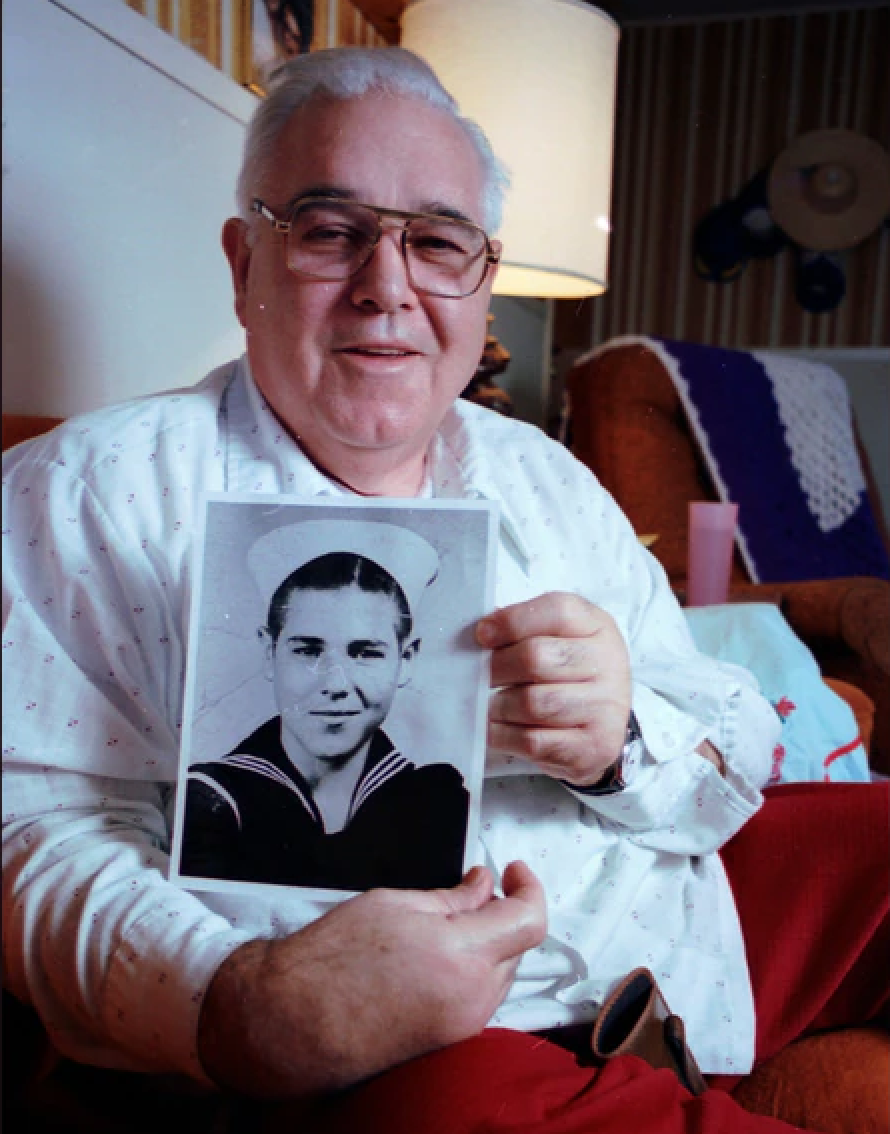In 1942, Calvin Graham was an 11-year-old living in an abusive situation that forced him and his brother into a Texas boarding home. It was there that he hatched a daring escape plan: Join the U.S. Navy and fight Nazis.
In an effort to look older, Graham began shaving his face and practicing a deeper voice. But being a 5 foot, 2-inch, 125-pound sixth-grader with razor burn hardly fooled anyone. It was forging his mother’s signature for consent and lifting a notary stamp that ultimately sealed the deal on his enlistment.
Graham simply told his mother that he was going to stay with relatives for a while, according to Business Insider.
He did, however, run into trouble when a dentist realized Graham still had baby teeth — a tad uncharacteristic of a self-proclaimed 17-year-old. But Graham was persistent, and the flustered dentist waived him through.
Graham was sworn into the Navy on Aug. 15, 1942, at 12 years old, making him the youngest person to enlist during World War II.
After training, he was sent to serve in the Pacific as a gunner aboard the USS South Dakota. During the Battle of Guadalcanal, Graham took shrapnel to the face, and though wounded, still continued to help other sailors. For this, Graham was awarded the Bronze Star and a Purple Heart.
He lost those awards, however, when his mother sold him out and revealed his age.
Graham was originally thrown in the brig, but got out when his sister threatened the Navy with bad press.
“He became known to headline-writers as the ‘baby vet’ after the Navy gave him a dishonorable discharge and revoked his disability benefits and his decorations,” the New York Times reported.
In addition to his medals, the discharge cost him disability benefits, which would have helped following the combat injuries he sustained.
At 14, Graham married and had a child. By 17, he was newly divorced and decided to re-enlist, this time as a Marine. Unfortunately, a broken back, for which he received 20 percent disability, ended his military career once and for all.
President Jimmy Carter later chose to return all of Graham’s medals, save for the Purple Heart. But it wasn’t until 1988 that President Ronald Reagan signed a bill restoring Graham’s status and paying out the disability owed.
“I have today approved H.R. 610, ‘An Act for the relief of Calvin L. Graham.’ Mr. Graham is a veteran of Navy and Marine Corps service who has honorably served his country,” the bill reads.
“Section 1 of the Act provides that, for purposes of service-connected disability compensation, the dental injuries that Mr. Graham incurred in the Battle of Guadalcanal will be considered to be a permanent service-connected disability incurred in the line of duty. Section 1 also provides for reimbursement of Mr. Graham for costs he incurred for the treatment of those injuries.”
Ever the embodiment of “live fast, die young,” Graham passed away in 1992 of heart failure. He was 62.
His nephew, Dean Lowrey, visited him shortly before he died, according to the Chicago Tribune. It was during that visit that Graham expressed sadness that he hadn’t had his Purple Heart restored.
“Calvin told me, ‘You know I’m not going to be here much longer, my old heart’s fixing to play out on me,’” Lowrey told the Chicago Tribune. “He talked about his medals. He’d gotten his Bronze Star and the others back, everything except the Purple Heart. He couldn’t figure why they’d held up that one. He said, ‘Maybe they’ll give me my Purple Heart after I’m gone.’”
He was right.
Then-Navy Secretary John Dalton restored Graham’s Purple Heart to his widow, Mary Graham, in 1994.
Originally published by Military Times, our sister publication.
historynet magazines
Our 9 best-selling history titles feature in-depth storytelling and iconic imagery to engage and inform on the people, the wars, and the events that shaped America and the world.






